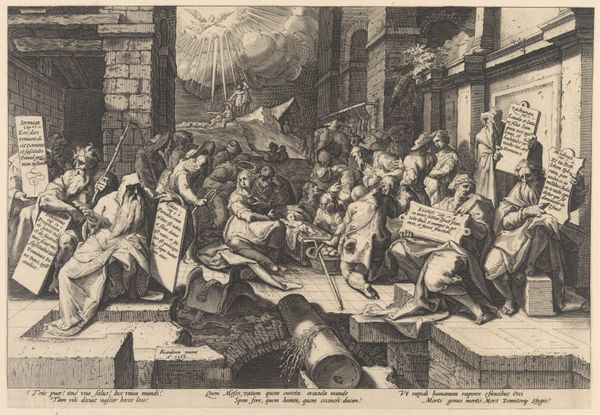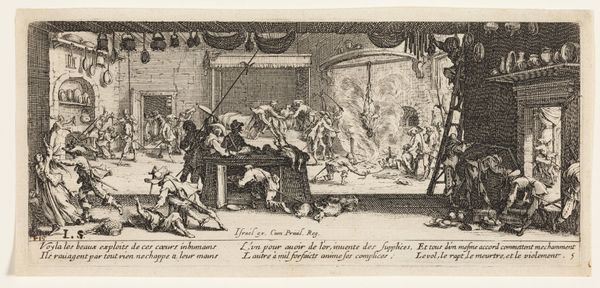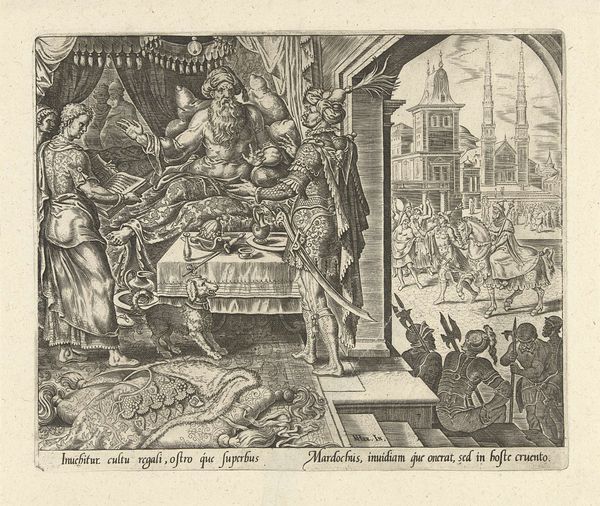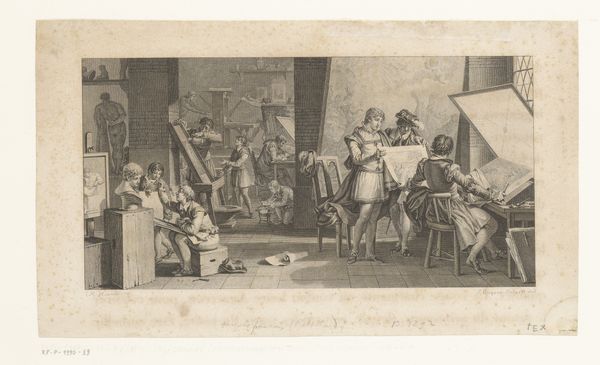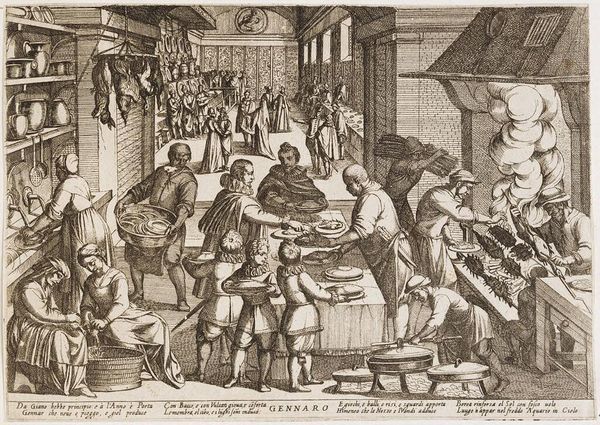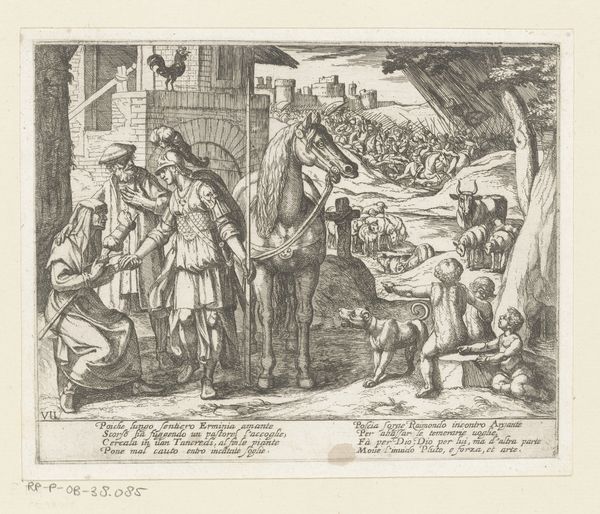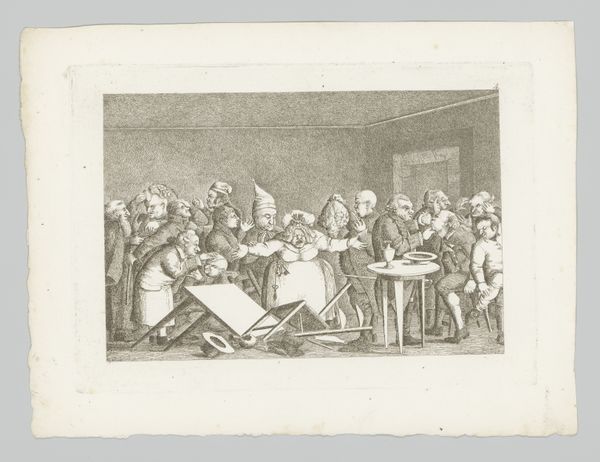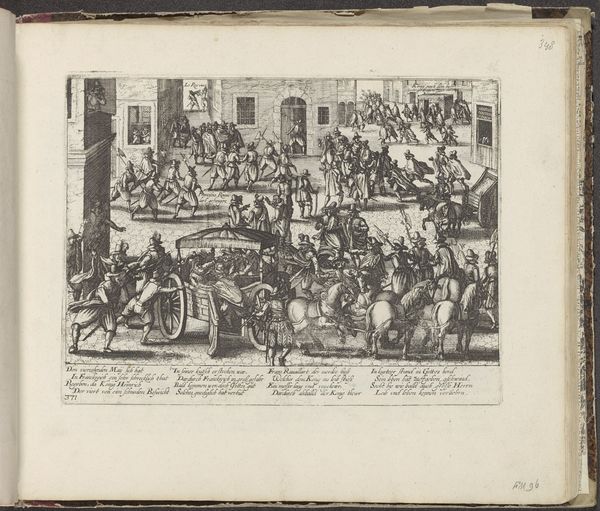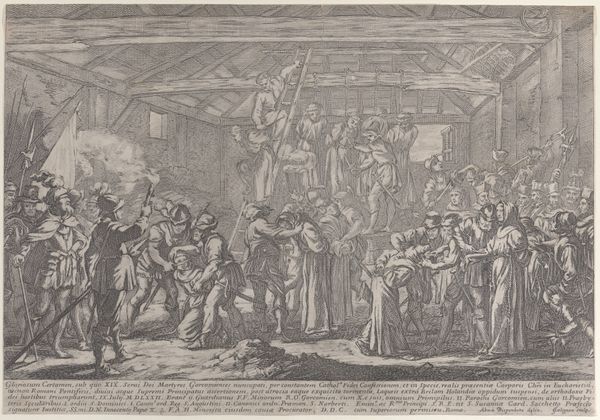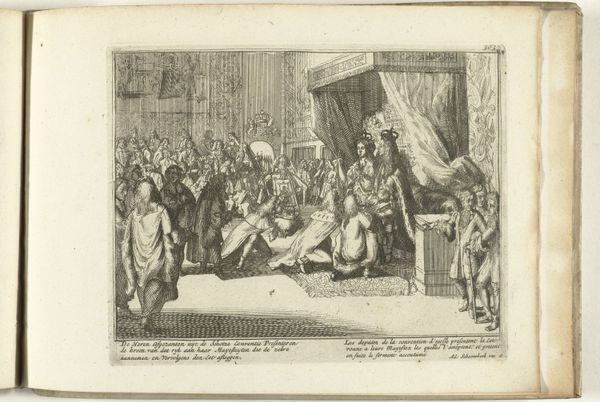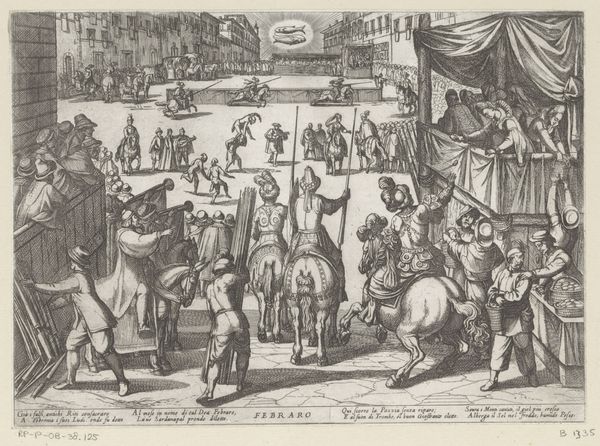
print, engraving
#
narrative-art
# print
#
old engraving style
#
genre-painting
#
history-painting
#
italian-renaissance
#
engraving
Dimensions: height 197 mm, width 280 mm
Copyright: Rijks Museum: Open Domain
Editor: This is "Januari: een keuken (waterman)", an engraving by Antonio Tempesta from 1599, held at the Rijksmuseum. It looks so busy! All those figures in the kitchen… like a Renaissance fever dream. It is incredibly detailed, but quite overwhelming. What stands out to you most in this piece? Curator: Ah, yes, it's bursting with life! For me, it's the story that Tempesta is telling, frozen in ink. Consider it a snapshot, not just of a kitchen, but of a whole social order at meal preparation, or what a wealthy household expected for food. Each figure seems absorbed in their task, almost theatrically so, don't you think? Editor: Theatrically? In what way? Curator: Well, look at the drama of it all! The bustling activity, almost a stage filled with players each assigned their part, their movements and gestures seem to invite the eye and even have meaning embedded. It's more than just factual, wouldn't you agree? Perhaps each action performed is not random, it’s performative as an homage. Editor: I see what you mean. It feels more constructed than observational, then? More like an imagined ideal? Curator: Exactly! It’s interesting to consider what he might want to portray and why. By observing how the actions performed, the costumes worn, one has an understanding of hierarchy and maybe even how this has evolved to this point and time in history! What do you suppose might the relationship of Tempesta with the Medici family influence how he composed this scene? Editor: Good point! Looking at it that way, I suddenly notice new things I hadn't before. Thanks. Curator: Likewise. Art reveals itself in layers, each observation enriching our perspective.
Comments
No comments
Be the first to comment and join the conversation on the ultimate creative platform.
